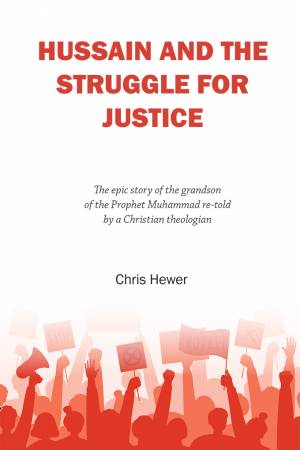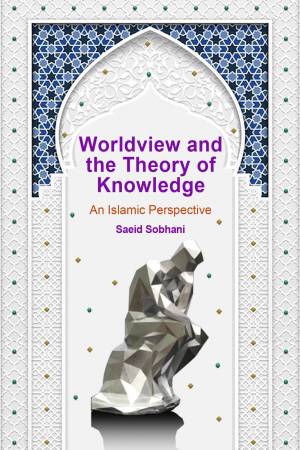Description
Rijal Studies – An Introduction
by: Dr. Saeid Sobhani
Dr. Saeid Sobhani was born into a senior clerical family in the holy city of Qom in 1963. He completed his high school education while being spiritually trained under the guidance of his father Grand Ayatollah Ja’far Sobhani.
For two decades from 1982 to 2002, he attended the lectures of eminent scholars of Qom and mastered such disciplines as Arabic literature, logic, Islamic philosophy, exegesis of the
Qur’an, the theological schools of thought (milal wa niḥal), the science of narrators and narrations (ʾilm al – rijāl and al – dirāyah), theology (kalām), Islamic jurisprudence (fiqh), and the principles of jurisprudence (uṣūl al-fiqh).
He received his advanced seminary training under three senior Ayatollahs. He was a student of Grand Ayatollah Abdollah Javadi Amoli and attended his discourses on exegetical
sciences and philosophy. He received his advanced training in jurisprudence under the late Grand Ayatollah Mirza Javād Tabrīzī. Simultaneously he also attended classes offered by his
father on uṣūl al-fiqh and theology. These three erudite scholars have played the most important role in shaping his system of thought. In addition to pursuing his advanced training, he also
taught in the most prominent universities and seminaries of Iran. Having been immersed in the ocean of spirituality and knowledge of the holy city of Qom for two decades, Sobhani
moved to the U.K. in 2002 to serve as a resident ‘ālim as well as to pursue his advanced academic training in a Western context.
He received his M.A. in Inter-Faith Relations from the University of Glasgow and his Ph.D. in Philosophy of Religion from the University of Edinburgh.
His two-decade-long sojourn in the West has further amplified his understanding of Western academic tradition as well as Occidental cultural currents. He is currently serving as a senior
lecturer at the Islamic College and Hawza ‘Ilmiyya of England in London.
He has published a number of articles and books (in English, Farsi, and Arabic) on a wide array of subjects including theology, philosophy, jurisprudence, the principles of jurisprudence,
exegesis of the Qur’an, history, rijāl studies, and fundamentals of belief. His publications include Religious Diversity in Contemporary Shi‘i Thought (2022), Nayl al – Waṭar min Qā’idah lā Ḍarar (The Jurisprudential Maxim of No Harm, 1999) and Jahān – bīnī va Shinākht (Epistemology, 1988).
Introduction
A review of the history of human intellectual disciplines shows that sciences have not emerged instantaneously. Rather they have grown over time and have been perfected through the ages under the influences of a multiplicity of causes. Islamic sciences (‘ulūm), especially the discipline of hadith, have had such a trajectory. In its initial stages, hadith was merely concerned with hearing and learning the statements of the Infallibles (as), committing them to the memory or writing them down, and eventually transmitting them to those who were yearning to learn them.
Hadith has a noble status in Islam because, after the Qur’an, it is the most important source from which the intentions of Shari‘a can be derived. From the Shī’ī perspective, after the Prophet
Muhammad (s) the infallible Imams were in charge of the explication of Shari’a. The Imams would explain the revelation at various stages and further explicate jurisprudential and
theological issues with their own hadiths.
The narrators of hadith were not equal in committing the hadiths to their memory, and in being trustworthy and honest. There were also mendacious and untrustworthy individuals
among the narrators of hadith. Also, the similarity in the names of some of the narrators would mean that a jurisconsult would lose confidence in the hadiths narrated by such narrators. As a
rule, a jurisconsult cannot issue a certain fatwa until he is fully confident that narrations that form the basis of that fatwa can be trusted. In this manner, in the history of hadith and in the transmission of hadiths to the later generation such problems as fabrication, distortion, misspelling, and other impairments emerged. Hence, Muslim scholars established a number of disciplines to distinguish the reliable from the unreliable hadiths so that they could benefit from the pristine discourses of the Infallibles (as).
One such discipline is the science of Rijāl which plays a role in filtering the authentic hadiths from non-authentic ones. A jurisconsult can utilise this science to find out about the life of
the narrators and assess their trustworthiness and retentiveness, thereby establishing a reliable procedure for deriving religious decrees. Not only the jurisconsults but also the scholars in such fields as history, exegesis, and theology need the science (‘Ilm ) of Rijāl because the hadiths of the Infallibles (as) form a significant part of the sources in these fields. Such scholars cannot truly utilise these sources without employing the methods and procedures of the science of Rijāl.
Considering the importance of the discipline of Rijāl, we approached the eminent scholar Dr. Saeid Sobhani and suggested that he write a textbook on the science of Rijāl, taking into account that he has taught Rijāl courses for more than two decades. The current literature on Rijāl is mostly translated into English and hence is not free from problems associated with translations. However, the current book has been authored in English by a scholar who has mastered this field and is certainly more successful in teaching the Rijāl concepts than translated works.
Dr. Sobhani takes the readers’ hand and navigates them through important Rijāl themes by providing numerous examples, making the journey through this book a fun and pleasant undertaking.
The book is comprised of 15 chapters. Here are some of the most important sections:
• Defining the ‘Ilm al – Rijāl
• Arguments for the ‘Ilm al – Rijāl
• Arguments against ‘Ilm al – Rijāl
• How to Know Narrators’ Qualities
• A Glance at Modern and Old ‘Ilm al – Rijāl Literature
This book is suitable for anyone interested in gaining a deep understanding of the discipline of Rijāl. Advanced students in this field will certainly benefit from this work as well. The sequel to this book, focusing on the topic of the ‘Ilm al – Dirāya, is currently being written by Dr. Sobhani and will become available in due course, God willing.
In conclusion, I would like to thank Dr. Sobhani for his efforts as well as the publication team who worked hard to make sure this book would be published and presented to the students of
the science of Rijāl.





Reviews
There are no reviews yet.